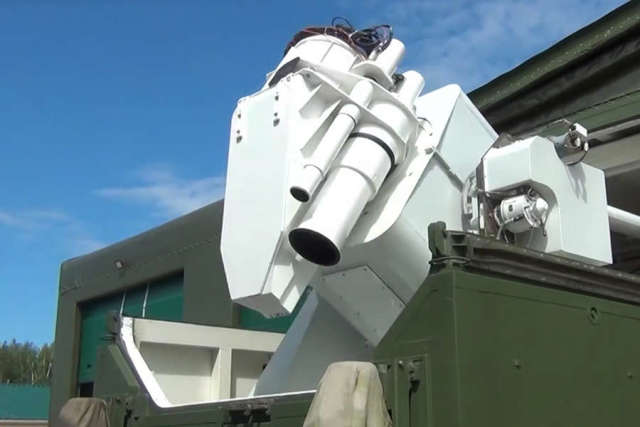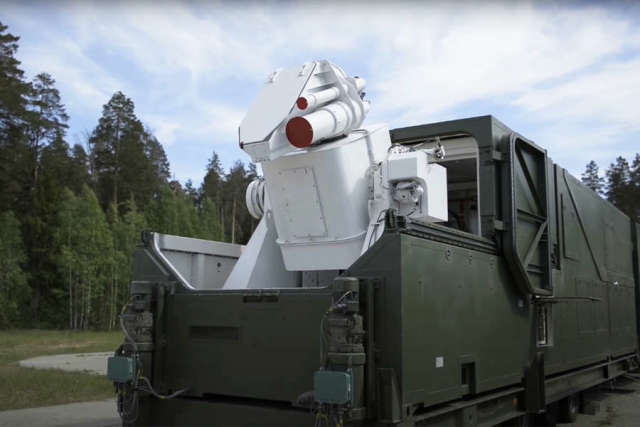Russia used the latest laser system "Badass" in Ukraine
Russia used its latest development in the field of laser weapons in Ukraine, said Deputy Prime Minister Yuri Borisov. According to him, this laser "burns through" objects and can "absolutely freely" shoot down drones at a distance of five kilometers. The previous domestic laser complex "Peresvet", according to experts, could also shoot down drones, but only in ideal weather.
Russia is using a new laser weapon in Ukraine that can shoot down drones, Deputy Prime Minister Borisov said on Channel One.
He clarified that we are talking about the "Badass" complexes. According to the Deputy Prime Minister, the use of "Badass" allows "not to spend expensive missiles such as "Shell" and "Torus".
As Borisov added, the "Bully" is produced "almost serially."
The Deputy Prime Minister noted that the new laser weapon shows itself well in tests.
Borisov did not explain about the tests of the "Bully" in this case or not.
In addition to the "Badass", the Russian troops are receiving laser systems "Peresvet", an older domestic development. According to Borisov, "Peresvet" can "blind all satellite reconnaissance systems of a likely enemy in orbits up to 1.5 thousand kilometers." The Deputy Prime Minister noted that against the background of the new development, "Peresvet" is "even to some extent yesterday."

Laser complex "Peresvet", a frame from the video of the Russian Ministry of Defense
Image source: Russian Ministry of Defense/RIA Novosti
Borisov did not specify whether Russia uses "Peresvet" in Ukraine.
"No, we will definitely not take the Peresvet there," said Alexey Leonkov, a military analyst and editor of the Arsenal of the Fatherland. When asked by Komsomolskaya Pravda why Russia would not use Peresvet in a military operation without taking it out of the territory of the Russian Federation, Leonkov said that "it's like firing a cannon at sparrows."
From "Peresvet" to "Badass". What kind of laser weapons were developed in Russia
Russian troops have been receiving the Peresvet since 2017. This became known in 2018 from the March federal address of President Vladimir Putin. He announced that Russia has achieved "significant results" in the development of laser weapons.
The Defense Ministry then reported that Russian scientists had learned in "a matter of fractions of a second" to concentrate the energy needed to defeat enemy weapons.
"There is a lot to talk about laser weapons, and films have been made about it for a long time, fantastic books have been written, everyone knows about it. But the fact that these systems began to enter service is really the realities of today," said Yuri Borisov, then Deputy Defense Minister.
In December 2018, Putin said that the military had worked out the use of "Peresvet" in practice. The Ministry of Defense reported that since December 1, 2018, the Peresvet laser complexes "are on experimental combat duty."
Kommersant wrote that in 2020, the Ministry of Defense used "Peresvet" in combat conditions in Syria. Drones were destroyed with the help of a laser.
Igor Korotchenko, director of the Center for Analysis of the World Arms Trade (CAMTO), noted that Peresvet can shoot down drones quite effectively only in ideal weather, "when there is no fog, no sandstorm, no precipitation." In addition, laser systems absorb a lot of energy, and it is difficult to deploy the necessary power plants in the field.
In 2020, the Ministry of Defense announced that Russia is developing a separate laser weapon against drones, as well as against "optical and optoelectronic means of the enemy." The name of this weapon was not disclosed.
As for the history of the "Bully", less is known about him. Back in August 2017, the Ministry of Defense ordered the development of the Zadira-16 combat complex, which would work "on new physical principles." The Russian Federal Nuclear Center (part of Rosatom) received the state contract for the Badass-16.
Anna Gromova

